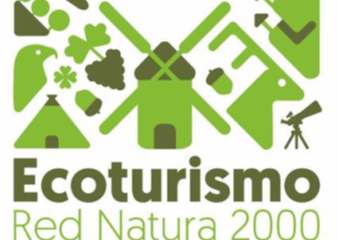A valley, a thousand walls, a thousand solidarity
France
Introduction
The Vallon d’Escaunes in Cantarelles is an exceptional environmental and historical site. Here, the Romans chose to dig for the aqueduct, leading the waters from Uzès to Nîmes via the famous Pont du Gard. There are two little-known galleries in this book that bear witness to the passage of water. Passionate volunteers decided to create an association to promote this valley. Beyond the presentation of the Roman remains, this original and participatory project recreated the landscape. An insertion site has cleared old abandoned olive trees, volunteers have created olive tree terraces lined with dry stone walls or rebuilt capitals, a landscaper has materialized the old passage of water under the supervision of the DRAC, three interpretation trails with picnic area in the heart of the old quarries allow to discover the site with the family… In addition to perpetuate the project and invest the local population, the association has created an original system of adoption of olive trees. In return for the benefit of the olive harvest, the ‘adopter’ undertakes to maintain the parcel. The association trains adopters in olive groves and harvesting, but also offers many festive events (walks, concerts…)
Presentation of the project
The project took place in Sernhac, on a heritage site listed as a Historic Monument. There are remains of the Roman aqueduct that linked Uzès to Nîmes via the Pont du Gard, a UNESCO World Heritage Site. The project responds to several problems: preservation of the site, enhancement and legibility for visitors, maintenance and restoration of dry stone works, fire prevention and upgrading of olive trees. The objectives of the project are to reveal and highlight the heritage richness of the valley, shaped by man and then abandoned, but also to maintain, sustainably manage and make life of this place by generating human dynamics The project has made it possible: · The materialization of the water path: accessible footbridge for PRMs, discreet signage allowing to distinguish in the landscape and by traveling along the water circuit · The creation of 2 discovery loops of the site: welcome panel, signage accessible to the greatest number integrating access to PRMs (local association consulted) and favorable to educational activities · The organization of the parking by favoring the available materials over place (molasses blocks…) and integrated into the landscape · Installation of a reception area with tables, benches, garbage cans, dry toilets, as integrated as possible (stone, wood…) · Treatment of degraded floors at the entrance of the valley · Development of a festive area: accessibility and safety. · Organization of several training courses on olive pruning and dry stone · Organization of regular meetings and festive events to bring the place to life. The LEADER program has made it possible to establish contacts with the various players and co-financiers of the project, to scale up the project, to make it sustainable and to support the setting up of the project in addition to funding. Cash-flow solutions have also been found to facilitate such a development project by a small local association.
The emblematic character of the project
The project took place in Sernhac, on a heritage site listed as a Historic Monument. There are remains of the Roman aqueduct that linked Uzès to Nîmes via the Pont du Gard, a UNESCO World Heritage Site. The project responds to several problems: preservation of the site, enhancement and legibility for visitors, maintenance and restoration of dry stone works, fire prevention and upgrading of olive trees. The objectives of the project are to reveal and highlight the heritage richness of the valley, shaped by man and then abandoned, but also to maintain, sustainably manage and make life of this place by generating human dynamics The project has made it possible: · The materialization of the water path: accessible footbridge for PRMs, discreet signage allowing to distinguish in the landscape and by traveling along the water circuit · The creation of 2 discovery loops of the site: welcome panel, signage accessible to the greatest number integrating access to PRMs (local association consulted) and favorable to educational activities · The organization of the parking by favoring the available materials over place (molasses blocks…) and integrated into the landscape · Installation of a reception area with tables, benches, garbage cans, dry toilets, as integrated as possible (stone, wood…) · Treatment of degraded floors at the entrance of the valley · Development of a festive area: accessibility and safety. · Organization of several training courses on olive pruning and dry stone · Organization of regular meetings and festive events to bring the place to life. The LEADER program has made it possible to establish contacts with the various players and co-financiers of the project, to scale up the project, to make it sustainable and to support the setting up of the project in addition to funding. Cash-flow solutions have also been found to facilitate such a development project by a small local association.
Pictures

Association le Vallon d’Escaunes à Cantarelles
De garrigues en costières
Occitanie

